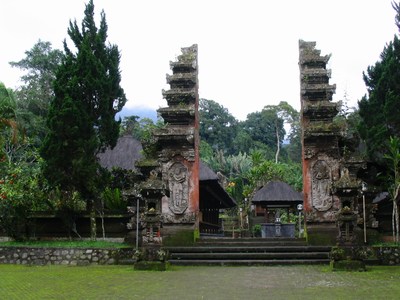When in Bali…Visit a Temple
 Known as the Island of the Gods, Bali has over a thousand temples and each with its own purpose in Balinese religion. Most Balinese are Balinese Hindu and as such religion dominates every aspect of their lives. The temple is a very special place for the Balinese, not only it is a place of worship, but also the centre of their social and cultural life.
Known as the Island of the Gods, Bali has over a thousand temples and each with its own purpose in Balinese religion. Most Balinese are Balinese Hindu and as such religion dominates every aspect of their lives. The temple is a very special place for the Balinese, not only it is a place of worship, but also the centre of their social and cultural life.
The numerous facets of Balinese culture are truly amazing and one of these is the Balinese temple; it could be a family temple at home or, a community temple in a village or town. There are temples that have a specific purpose like directional temples and sea temples; each with its own importance. Whatever the case may be, the many temples on the island of Bali are worth visiting even if it’s just for the experience. You might get lucky and there will be a temple celebration going on.
Visiting Balinese temples allows you to see the beautiful stone carvings [something I have always found fascinating] and a great place to learn about the culture of Balinese. Temples are a special place to gather for religious ceremonies. All of the temples in Bali are decorated in stone carvings that depict the Hindu mythology.
Starting with the plain outside gate, a person can pass into the middle courtyard via a candi bentar, the impressive Balinese split-gate. From there to the inner courtyard one has to pass through a kori agung, which is a stone-capped gate. Often there will be a flat block of cement (aling aling) directly inside the kori agung, blocking the way, forcing those entering to walk around either side. This is to keep evil spirits out of the jeroan, as spirits can only walk in straight lines.
Common features found inside a temple are bales, the open sided pavilions with raised seating section and thatched roof. These have a variety of uses including a place for the gamelan orchestra to sit, village meeting and a resting place for worshipers. Another common feature is gedong, or square shaped brick shrines capped with a thatched roof. These have specific names and are in honour of a particular ancestor, such as the village founder, or a specific deity, such as Sanghyang Widi Wasa; the supreme deity.
